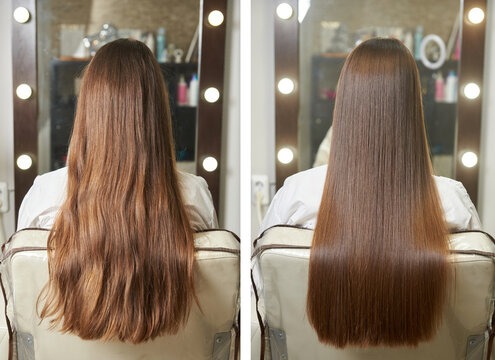
HAIR STRAIGHTENING TEST
Hair straightening tests refer to a series of procedures used to assess the effectiveness of straightening treatments or products. These tests are typically conducted by cosmetic product developers, researchers, and quality control laboratories. The goal is to objectively and consistently measure how long a product or treatment keeps hair straight, its impact on hair health, ease of use, and overall performance.
Common Methods and Technical Details in Hair Straightening Tests
1. Visual and Tactile Evaluation
Technical Details: Trained experts assess the hair’s appearance and texture before and after the straightening process. Smoothness, shine, softness, frizz, and overall hair quality are subjectively rated using a standardized scale (e.g., a 1-5 scoring system).
Standardization: To ensure consistency, evaluations are conducted under the same lighting conditions and at specific time intervals (e.g., immediately after the procedure, after one day, and after one week).
2. Mechanical Tests
Curl Reversion Test
Technical Details: Straightened hair samples are exposed to controlled humidity and temperature conditions (e.g., 80% relative humidity, 25°C) for a set period. The extent to which the hair returns to its original wavy or curly state is measured by evaluating hair length, curl angle, or curl index.
Measurement: Typically, photographic analysis is used. Images of hair samples are captured and analyzed using specialized software to calculate curl angle or index.
Tensile Testing
Technical Details: This test evaluates the impact of the straightening process on hair’s mechanical properties, measuring tensile strength and elasticity. It helps determine how much the hair weakens after treatment.
Equipment: Conducted using an Instron or similar universal testing machine. The hair strand is clamped between grips and stretched at a controlled speed until it breaks, with breakage points and elongation recorded.
Friction Test
Technical Details: This test measures the surface roughness and friction coefficient of straightened hair, providing insights into smoothness and ease of combing.
Equipment: A tribometer or friction testing device is used. The hair strand is rubbed against a known surface under a specific load, and frictional force is measured.


3. Imaging Techniques
Scanning Electron Microscopy (SEM)
Technical Details: Used to capture high-resolution images of the microscopic structure of the hair surface. This method allows for a detailed examination of the damage caused by straightening treatments on the cuticle (outer layer), such as cuticle lifting or cracking.
Atomic Force Microscopy (AFM)
Technical Details: Measures hair surface roughness and topography at the nanometer scale. This technique helps assess how much a straightening treatment has smoothed the hair surface.
4. Chemical Analyses
Protein Loss Measurement
Technical Details: Determines the amount of protein lost from the hair during the straightening process, indicating the extent of chemical damage.
Methods: Protein quantification methods such as Bradford or Lowry assays can be used.
Cystine/Cysteine Ratio Measurement
Technical Details: Chemical straighteners break disulfide bonds (cystine), reducing them to cysteine. The cystine/cysteine ratio indicates the effectiveness of the treatment and the extent of chemical changes in the hair structure.
Methods: Spectrophotometric analysis using chemical reagents such as Ellman’s reagent.
Contact Us for Hair Straightening Testing.
We offer affordable and effective solutions tailored to your needs.
The information presented on this website does not constitute legal advice and is intended for informational purposes only. KompassEurope.com.tr assumes no responsibility for any errors or omissions in the information contained on this website. Any decisions made or actions taken by the reader based on this information are solely at the reader's own risk, and KompassEurope.com.tr shall not be held liable for any legal consequences arising from such decisions or actions. Readers are strongly advised to seek professional legal counsel regarding their specific circumstances and concerns.
© 2025 Kompass Europe. All rights reserved. The contents of this website belong to Kompass Europe and are protected by copyright laws. Copying, publishing, distributing or any commercial use of the information on the website is possible only with written permission. By using this site, you agree to our Terms of Use and Privacy Policy.
